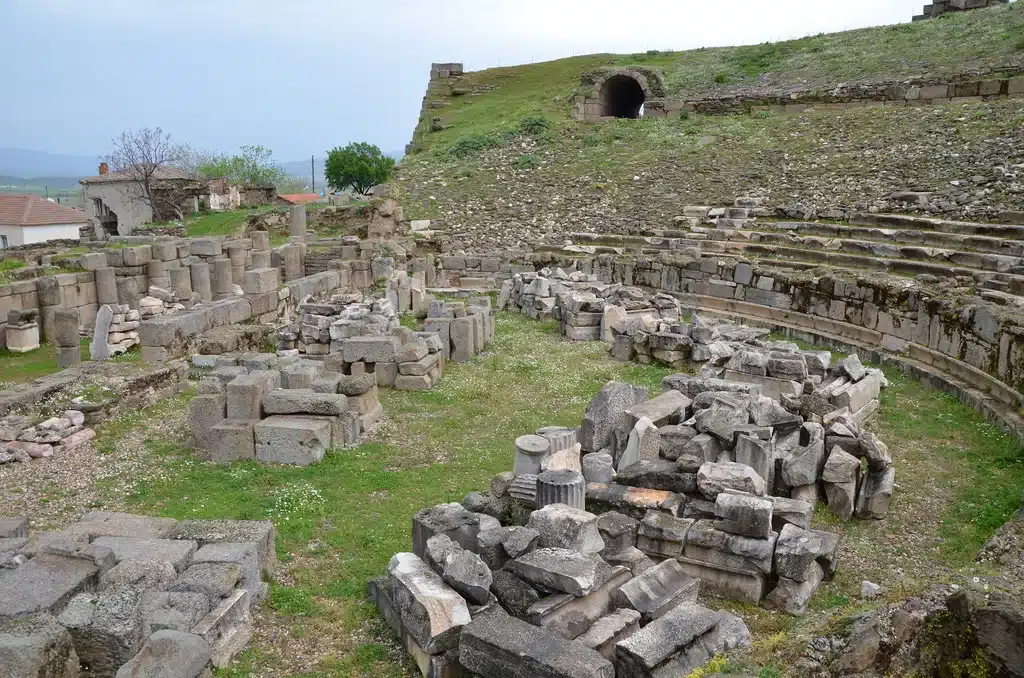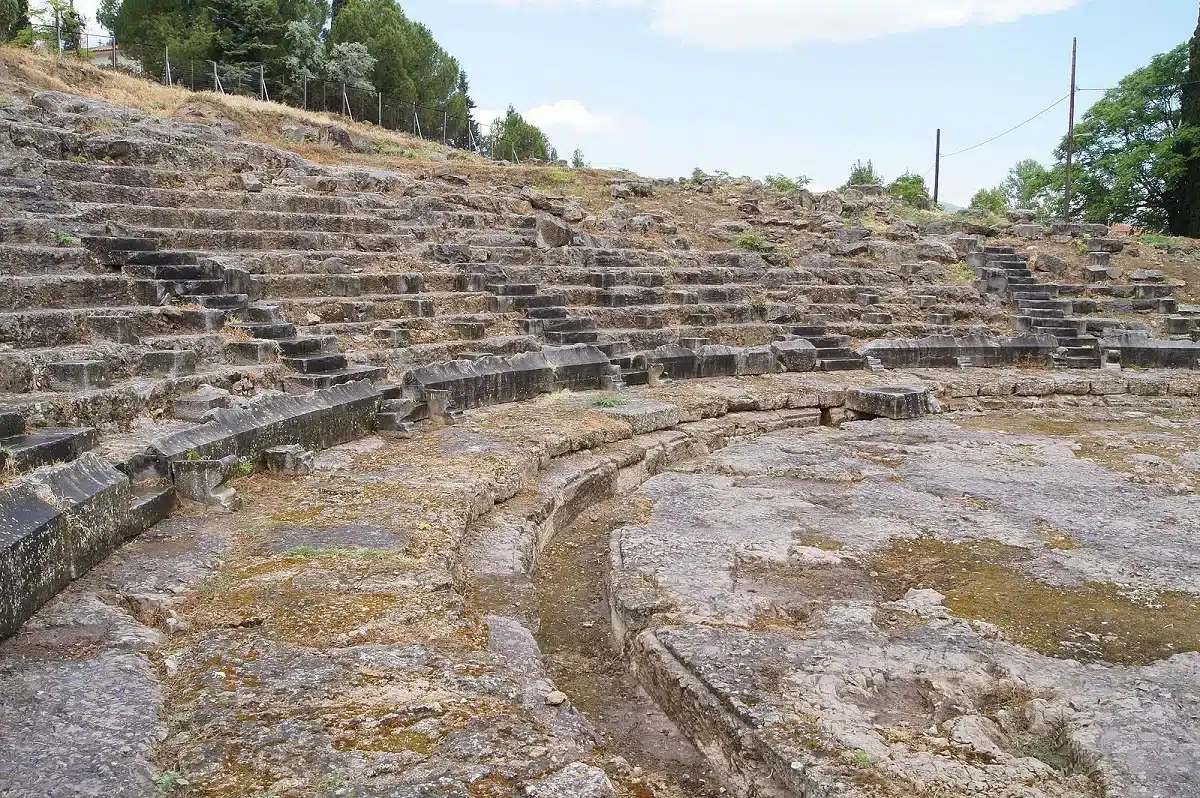Geographical Location and Description of Bactria
Bactria was known as a region of strategic importance in the heart of Asia in ancient times. Today, this historical region mainly covers the north of Afghanistan , the south of Tajikistan and the southern borders of Uzbekistan .
Geographical Structure of Bactria
Bactria is known for its rich and fertile lowland areas, which made it a suitable center for agriculture in the ancient world. The lands irrigated by the Amu Darya River have made the region an attractive settlement throughout history. Geographically, its proximity to the Hindu Kush Mountains protected it as a natural stronghold and also offered an easy route of trade and invasion.
Bactria in the Modern World
Today, Bactria attracts great attention due to its archaeological riches and historical importance. The region contains the remains of some of the oldest civilizations in world history, making it a valuable research area for archaeologists, historians and cultural heritage experts.
History of Bactria
Bactria’s history has been a gateway to rich and diverse civilizations, which have shaped its cultural landscape.
Ancient Period and Its Establishment
The history of Bactria dates back to B.C. It dates back to 2000 BC and the region was first used as an important administrative center by the Achaemenid Empire . It also gained importance as a religious center in the early periods of Zoroastrianism .
Civilizations and Kingdoms That Prevailed in Bactria
Bactria came under the rule of a number of powerful civilizations, including the Greek , Mauryan , Kushan and Sassanid empires respectively. Each civilization brought its own culture and art to the region, increasing the cultural richness of Bactria.
The Golden Age of Bactria and Its Importance on the Silk Road
The golden age of Bactria dates back to B.C. as an important stop on the Silk Road . It took place between 250 BC and 250 AD. During this period, Bactria became the center of trade between East and West and gained great wealth and cultural diversity thanks to its dominance over the trade routes in the region. Its location on the Silk Road enabled Bactria to become both an economic and cultural crossroads.
Cultural and Economic Characteristics of Bactria
Bactria has been the point of interaction of many different cultures in various periods of history. This cultural mix has enriched both the economic and social structure of Bactria, while also adding depth to the artistic heritage of the region.
Cultural Interaction and Artistic Heritage
Bactria served as a bridge between different civilizations, resulting in a wide variety of artistic interactions . Artistic elements of Greek, Persian, Indian and many other cultures manifested themselves in Bactrian art. Greco-Buddhist art is one of the most prominent examples of this interaction, especially the influences of the Hellenistic style seen in Buddhist sculpture and frescoes.
Economic Activities and Trade
Economically, Bactria became a major trading center on the Silk Road thanks to its strategic location. The region has developed economically with agriculture (especially grain and viticulture), animal husbandry and trade , and has become a trading point where various goods are bought and sold between east and west. Local industries such as precious metals and stonemasonry also developed.
Religious and Social Structure
From a religious perspective, Bactria has been an area where various religions such as Zoroastrianism , Buddhism , Hinduism and later Islam interacted. This religious diversity has shaped the social structure and helped ensure harmony between different cultural groups. The social structure was generally flexible and various ethnic and religious groups lived together.
Architectural and Archaeological Heritage of Bactria
Bactria’s rich history can be clearly seen in the archaeological sites and architectural ruins of the region.
Important Archaeological Sites and Ruins
Ay Khanum is one of the most important archaeological sites in Bactria. This site contains a large city from the Greco-Bactrian Kingdom and has Hellenistic architectural features. Other sites such as Surh Kotal and Balkh also shed light on the religious and cultural history of the region. These sites provide valuable information about the social and religious life of ancient civilizations.
Architectural Buildings and Artistic Workmanship
Bactrian architecture was influenced by the Greco-Bactrian and Kushan periods, and many structures such as temples , palaces and stupas from these periods have survived to the present day. The decoration techniques and architectural styles used in these structures demonstrate the artistic diversity of the region and the craftsmanship skills of the period.
Modern Discoveries and Research of Bactria
The ancient ruins and historical significance of Bactria have been widely studied by scientists and archaeologists in modern times. These studies have helped us better understand the role of Bactria in the historical scene by providing in-depth information about the history of the region.
20th and 21st Century Archaeological Studies
Modern archaeological studies have illuminated the rich history and culture of Bactria. These studies, which started especially in the early 20th century , documented the geographical and strategic importance of the region. Research on the region during the Soviet Union period led to the discovery of many Hellenistic period artifacts and revealed the dimensions of Greek-Bactrian interaction.
Excavations carried out in the second half of the 20th century and the beginning of the 21st century have led to the discovery of previously unknown Buddhist temples , palaces and civil structures. Ay Khanum excavations have revealed the architectural and cultural richness of the region in the Hellenistic period. Additionally, detailed research on historical sites such as the ancient city of Balkh has documented the importance of Bactria in the Islamic period.
Important Scientific Research on Bactria
Scientific research has enabled the history, culture and interactions of Bactria to be evaluated from a broad perspective. Collaboration between the disciplines of archaeology , anthropology , history and art history has allowed for a versatile study of Bactria.
For example, studies of manuscripts and artworks found in Bactria have provided important information about the religious and philosophical diversity of the region. Additionally, genetic research and bioarchaeological studies have revealed new information about the origins and migration movements of the Bactrian people.
Finally, studies of Bactria’s climate change have examined the region’s past climatic conditions and the effects of these conditions on prehistoric and ancient communities. Such studies play a critical role in our understanding of the ecological history of Bactria.
Conclusion
Bactria has a rich cultural and economic heritage, being one of the most diverse and dynamic regions in history. Its architectural and archaeological remains carry the richness and diversity of this ancient civilization to the present day. The place and importance of Bactria in the historical scene still holds an important place in archeology and history studies, and the history of the region continues to be better understood and preserved.





